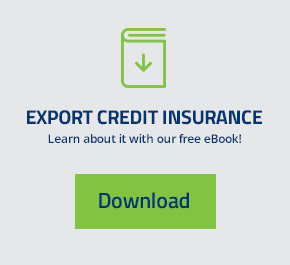The U.S. International Trade Administration regularly publishes industry-specific reports that highlight opportunities abroad. These reports provide detailed analysis on the competitive landscape within a sector, as well as challenges and opportunities facing U.S. exporters in these markets.
Market Overview
The global automotive parts industry is fiercely competitive, including large players in China, India and Russia as well as traditional automotive powerhouses in the U.S., Germany and Japan. Yet, despite this competitive environment, since 2009 the U.S automotive parts industry has nearly doubled its exports. This blog will analyze the projected top markets and identify the key challenges and opportunities facing U.S. automotive parts manufacturers moving forward.
The automotive parts industry is largely divided into two categories: Original Equipment (OE) suppliers and aftermarket suppliers. OE suppliers account for up to 75 percent of total production and the demand for OE parts is closely tied to demand for new vehicles. Aftermarket parts are parts built to replace OE parts as they become worn or damaged.
Projected Top Markets for U.S. Automotive Parts
Historically, governments have used policies to support the creation and expansion of a domestic industry, including the use of subsidies, tariffs and non-tariff barriers. The report points out that China will become a strong prospect market for American-made OE auto parts due to its sheer production size and recent growth of U.S. imports. It is projected to produce 27 million vehicles by 2020. Canada and Mexico occupy the other top two spots for a different set of reasons. Proximity to the U.S and sharing of a border, as well as integration of industry standards continue to make these markets strong prospects for U.S. exporters going forward.
Challenges
Key challenges facing U.S. automotive parts manufacturers include a lack of uniform standards across borders, the push by foreign governments for localization and high tariffs and excise taxes. The greatest challenge affecting U.S. competiveness is the global regulatory environment that differs in many countries. Full compliance with these regulatory standards is often costly and time-consuming for small to medium-sized manufacturers. Additionally, more countries that used to accept U.S. compliant parts are now making their rules more stringent or moving towards the EU standards because the EU has been more aggressive in promoting its standards and making it a condition in trade agreements.
Moreover, some governments offer incentives for foreign companies to build a local factory or set up joint partnership with a local firm; China is a prime example of this practice. To foster the development of its automotive industry, China requires companies to produce in-country or partner with a local manufacturer.
Finally, many markets import high tariffs or excise taxes on imported automotive parts to make their domestic parts more attractive. For example, Thailand imposes tariffs as high as 80 percent for imports that compete with its domestic automotive parts.
Opportunities
The Trans-Pacific Partnership (TPP) presents many opportunities to U.S. exporters in that it reduces the cost of exporting and non-tariff barriers to TPP partner countries. For example, under TPP, 98.1% of U.S. auto parts exports to TPP markets will be eligible for immediate duty-free treatment. In addition, bilateral trade agreements with Japan will work remove non-tariff barriers through more transparent regulations. TPP also creates strong protection for patents and trademarks. All of these changes should help U.S. manufacturers to expand into other markets beyond Mexico and Canada and grow their international sales.
Want to Learn How EXIM Can Help You Capitalize on These Opportunities?
Find out more about how EXIM can unlock financing and assist your business in managing commercial and political risks associated with exporting:
